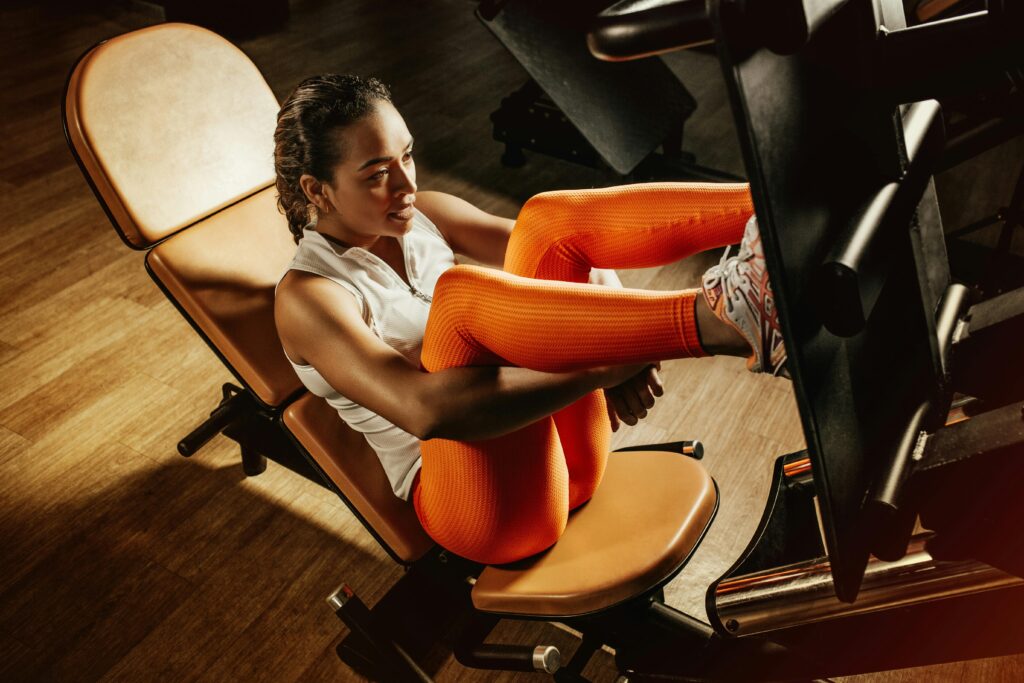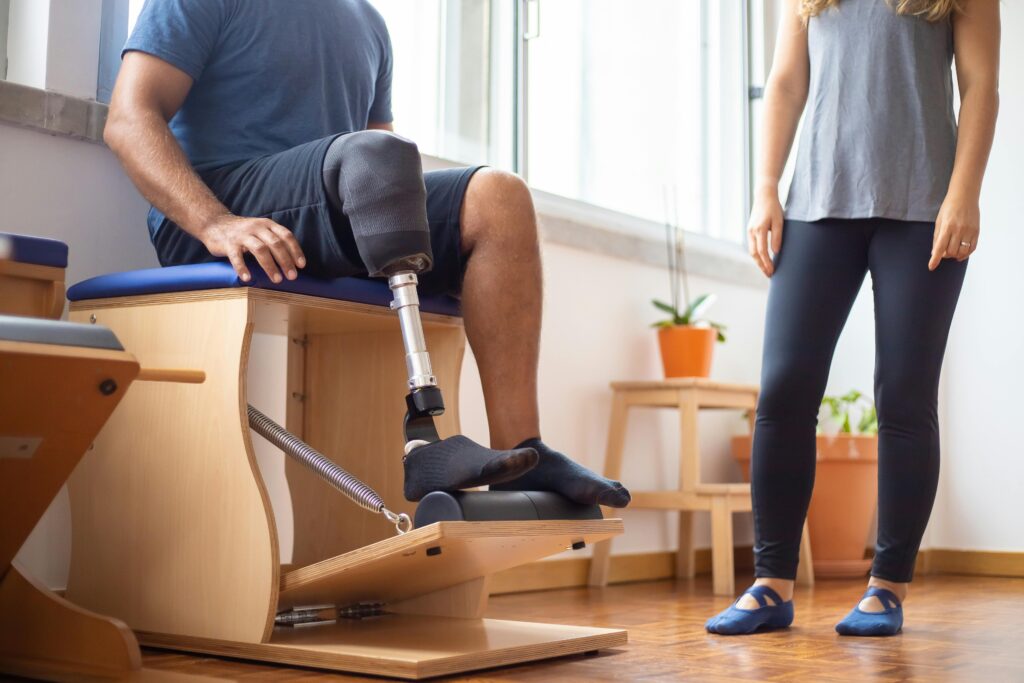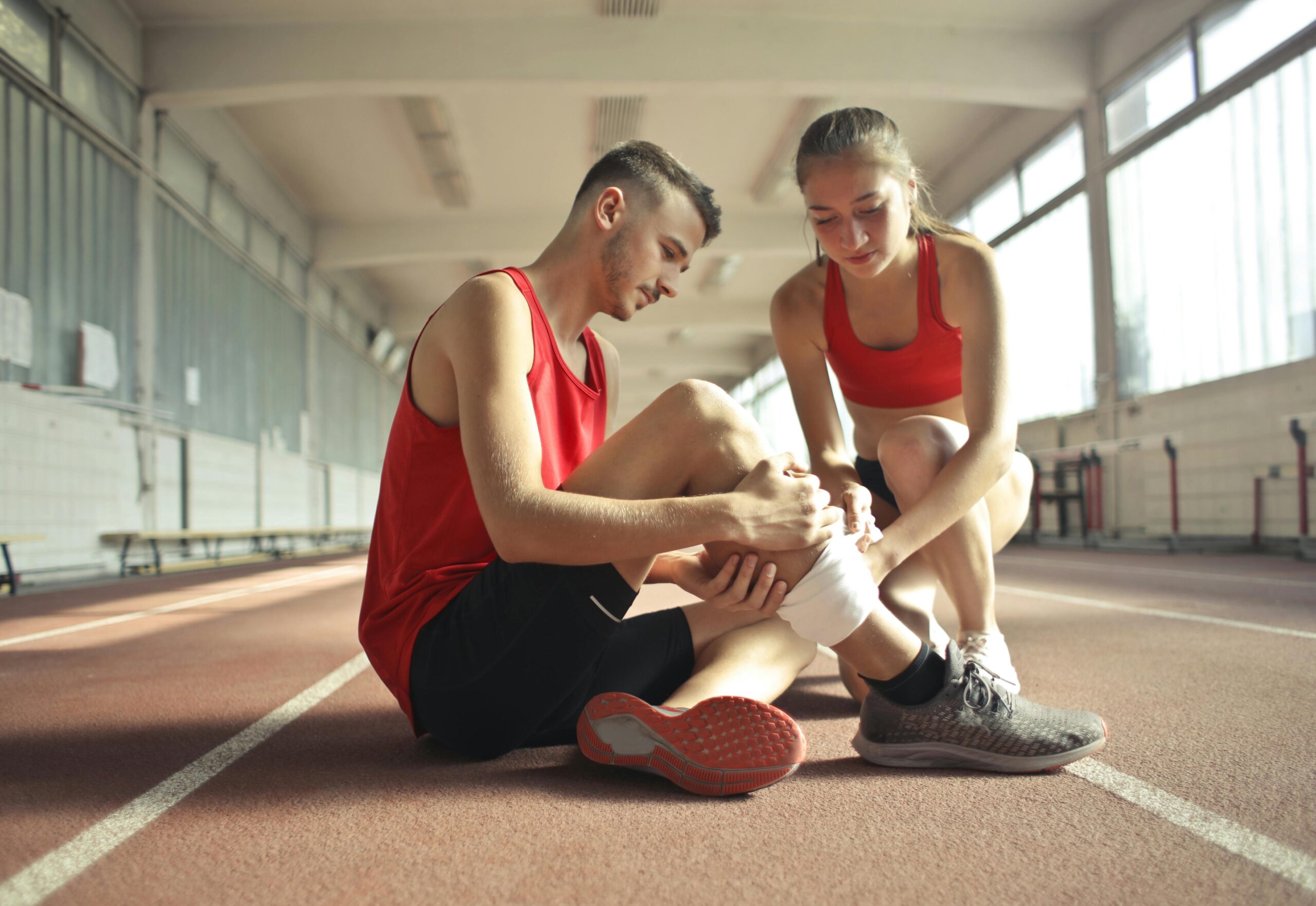Table of Contents
Embarking on a fitness journey can feel overwhelming, especially if you’re new to exercise. The good news is that anyone can achieve their fitness goals with the right guidance, a positive mindset, and a commitment to making small, consistent changes.
This guide will walk you through the basics of physical fitness, introduce essential exercises, and offer tips to help you get started and stay motivated.
Introduction
Physical fitness is more than just a means to achieve a desired body shape—it’s a crucial element of a healthy lifestyle. Regular exercise benefits not only your physical health but also your mental and emotional well-being. It can improve cardiovascular health, increase muscle strength, enhance flexibility, and boost your mood.
However, the thought of starting a fitness routine can be daunting for beginners. Common concerns include not knowing where to begin, fear of injury, or simply feeling too busy to fit exercise into a daily routine.
This guide is designed to help you overcome these barriers by providing straightforward advice and practical tips tailored for beginners. Whether your goal is to lose weight, build muscle, or simply improve your overall health, this guide will equip you with the knowledge and confidence to get started.

1. Understanding the Basics of Physical Fitness
Before diving into specific exercises, it’s important to understand the key components of physical fitness. These elements form the foundation of a well-rounded fitness routine:
Components of Physical Fitness
- Cardiovascular Endurance: This is the ability of your heart, lungs, and circulatory system to supply oxygen to your muscles during sustained physical activity.
- Improving cardiovascular endurance can help you perform activities like walking, running, or cycling for longer periods without feeling fatigued.
- Muscular Strength: This refers to the amount of force your muscles can produce. Strength training not only helps you lift heavier objects but also supports joint health, improves posture, and reduces the risk of injury.
- Muscular Endurance: Unlike muscular strength, which focuses on the amount of force produced, muscular endurance is about how long your muscles can perform a task without getting tired.
- This is important for activities like carrying groceries or climbing stairs.
- Flexibility: Flexibility is the range of motion available in your joints. Good flexibility helps prevent injuries, reduces muscle soreness, and improves overall movement efficiency.
- Body Composition: This refers to the proportion of fat to lean mass (muscle, bone, water) in your body. A healthy body composition generally includes lower levels of body fat and higher levels of lean mass.
Setting Realistic Fitness Goals
To stay motivated and track your progress, it’s essential to set realistic fitness goals. The SMART goal-setting framework is a useful tool:
- Specific: Define your goal clearly (e.g., “I want to run 5 kilometers without stopping”).
- Measurable: Ensure your goal can be tracked (e.g., “I will track my running distance and time”).
- Achievable: Set a goal that is challenging yet attainable (e.g., “I will increase my distance by 1 kilometer every two weeks”).
- Relevant: Your goal should align with your overall fitness objectives (e.g., “Running will help improve my cardiovascular endurance”).
- Time-bound: Set a deadline for your goal (e.g., “I will achieve this within three months”).
2. Essential Exercises for Beginners
A well-rounded fitness routine includes a mix of cardiovascular, strength, flexibility, and balance exercises. Here are some essential exercises that are perfect for beginners:
Cardiovascular Exercises
- Walking: Walking is the most accessible form of exercise. It requires no special equipment and can be done almost anywhere. Start with short walks and gradually increase your pace and distance.
- Jogging/Running: If you’re ready to take walking to the next level, jogging or running is a great way to boost your cardiovascular fitness.
- Start by alternating between walking and jogging, gradually increasing the jogging intervals as your endurance improves.
- Cycling: Cycling, whether on a stationary bike or outdoors, is a low-impact exercise that’s easy on the joints. It’s ideal for improving cardiovascular health and building leg strength.
- Swimming: Swimming is a full-body workout that’s easy on the joints, making it ideal for those with joint issues or injuries.
- It improves cardiovascular endurance, strength, and flexibility all at once.

- Bodyweight Exercises: These exercises use your body weight as resistance and are great for building strength without the need for equipment. Essential bodyweight exercises include:
- Squats: Strengthen your legs and core.
- Push-ups: Work your chest, shoulders, and triceps.
- Lunges: Target your thighs, hips, and buttocks.
- Planks: Strengthen your core, back, and shoulders.
- Resistance Training: If you’re ready to add more resistance to your workouts, consider using resistance bands or light weights.
- These tools can help you gradually increase the intensity of your exercises. Start with basic moves like bicep curls, shoulder presses, and leg lifts.
- Core Strengthening: A strong core is crucial for stability and overall strength. In addition to planks, try exercises like crunches, leg raises, and Russian twists to target your abdominal muscles.
Flexibility and Mobility Exercises
- Stretching: Stretching improves flexibility and reduces muscle tension. Incorporate both static stretching (holding a stretch for 15-30 seconds) and dynamic stretching (moving through a range of motion) into your routine.
- Focus on major muscle groups like your hamstrings, quadriceps, and shoulders.
- Yoga/Pilates: These practices combine stretching, strength, and balance. Yoga is particularly good for improving flexibility and mental relaxation, while Pilates focuses more on core strength and stability.
Balance and Stability Exercises

- Simple Balance Exercises: Improving your balance is important for overall coordination and injury prevention. Start with exercises like standing on one leg or walking heel-to-toe in a straight line.
- Using a Stability Ball: A stability ball can be used for a variety of exercises that improve balance and core strength. Simple exercises include sitting on the ball with one foot off the ground or performing squats while holding the ball.
3. Creating a Beginner-Friendly Workout Routine
A balanced workout routine combines different types of exercises to ensure overall fitness. Here’s how to create a routine that works for you:
Designing a Balanced Routine
Your workout plan should include:
- Cardio: Aim for at least 150 minutes of moderate-intensity cardio per week (e.g., 30 minutes of walking, five days a week).
- Strength Training: Include strength exercises at least two days per week, focusing on all major muscle groups.
- Flexibility: Incorporate stretching or yoga sessions into your routine two to three times per week.
Sample Weekly Workout Plan
- Monday: 30-minute walk or jog + 15 minutes of stretching.
- Tuesday: 20 minutes of bodyweight exercises (e.g., squats, push-ups, planks).
- Wednesday: Rest or light activity like walking or yoga.
- Thursday: 30-minute cycling or swimming session.
- Friday: 20 minutes of resistance training + 10 minutes of core exercises.
- Saturday: 30-minute walk or jog + 15 minutes of stretching.
- Sunday: Rest or light activity like walking or yoga.
Starting Slow and Progressing Gradually
One of the biggest mistakes beginners make is doing too much too soon. Start with shorter, less intense workouts, and gradually increase the duration and intensity as your fitness improves. Listen to your body and take rest days as needed to prevent burnout and injury.
Rest and Recovery
Rest is as important as the workouts themselves. Rest days give your muscles time to repair and grow, reducing the risk of injury and improving your performance. Active recovery, such as light walking or gentle yoga, can help reduce muscle soreness and keep you moving.
4. Tips for Staying Motivated

Staying motivated is key to sticking with your fitness routine. Here are some tips to help you stay on track:
Finding Enjoyment in Exercise
The best way to stay motivated is to find activities you enjoy. If you dread your workouts, you’re less likely to stick with them. Experiment with different types of exercise until you find something that you look forward to. Whether it’s dancing, hiking, or playing a sport, find what makes fitness fun for you.
Tracking Progress
Tracking your progress can be incredibly motivating. Keep a fitness journal or use an app to log your workouts, track your goals, and celebrate your achievements. Seeing how far you’ve come can boost your confidence and keep you motivated to continue.
Overcoming Common Challenges
Everyone faces obstacles in their fitness journey. Whether it’s a busy schedule, lack of energy, or a plateau in progress, it’s important to have strategies to overcome these challenges. Try scheduling your workouts at the same time each day, preparing your exercise gear the night before, and reminding yourself of your goals when motivation wanes.
5. Nutrition and Hydration for Beginners
Exercise is just one part of the fitness equation; nutrition and hydration are equally important:
Fuel your workouts and support recovery by focusing on a balanced diet rich in whole foods. Incorporate a variety of fruits, vegetables, lean proteins, whole grains, and healthy fats.
Plan your meals around your workouts, aiming to eat a small, balanced meal one to two hours before exercise, and a protein-rich meal afterward to support muscle recovery.
Hydration Essentials
Staying hydrated is crucial, especially when you’re active. Water is essential for regulating body temperature, lubricating joints, and transporting nutrients. Aim to drink water throughout the day, and pay attention to your hydration needs before, during, and after exercise.
As a general rule, drink water whenever you feel thirsty, and increase your intake in hot weather or during intense workouts.
6. Safety Considerations for Beginners

Safety should always be a priority, especially when you’re new to exercise. Here are some tips to keep you safe:
Proper Form and Technique
Learning the correct form and technique is essential to prevent injuries. When starting a new exercise, take the time to learn how to do it correctly.
This might involve watching instructional videos, attending a fitness class, or working with a trainer.
Listening to Your Body
It’s important to recognize the difference between discomfort, which is normal when you’re challenging your body, and pain, which is a sign that something is wrong. If you experience sharp or persistent pain, stop exercising and seek medical advice if necessary.
Choosing the Right Equipment
Wearing appropriate footwear and comfortable clothing can make a big difference in your workout experience. Choose shoes that are designed for the activity you’re doing, and consider investing in basic home fitness equipment like resistance bands or a yoga mat to enhance your workouts.
7. When to Seek Professional Help
Sometimes, getting started or progressing in your fitness journey is easier with professional support:
Personal Trainers
Working with a personal trainer can provide you with personalized guidance and support, especially if you’re unsure where to start or have specific fitness goals. A trainer can help you create a workout plan, ensure you’re using the correct form, and keep you motivated.
Group Fitness Classes
Group fitness classes offer a fun and social way to exercise. Many gyms and community centers offer beginner-friendly classes like Zumba, yoga, or circuit training, which can be a great way to learn new exercises and meet like-minded individuals.
Fitness Apps and Online Resources
If you prefer to work out at home, consider using fitness apps or online resources for guided workouts. Many apps offer workout plans for beginners, tracking tools, and instructional videos to help you get started and stay on track.
Conclusion
Starting a fitness routine as a beginner can be challenging, but with the right approach, it’s entirely achievable. By understanding the basics of physical fitness, incorporating essential exercises, and staying motivated, you’ll be well on your way to achieving your fitness goals.
Remember to start slow, listen to your body, and prioritize safety as you build your routine. Whether you choose to work out at home, join a gym, or take group classes, the most important step is to get started.
Call to Action
Now that you have the tools and knowledge to begin your fitness journey, it’s time to take action. Share your fitness goals or experiences in the comments below, and download our beginner workout plan to help you get started.
Remember, every small step you take brings you closer to a healthier, fitter you. Good luck!

